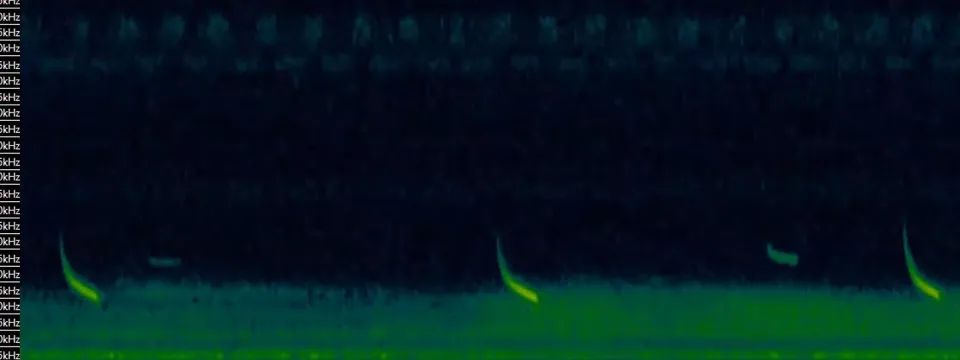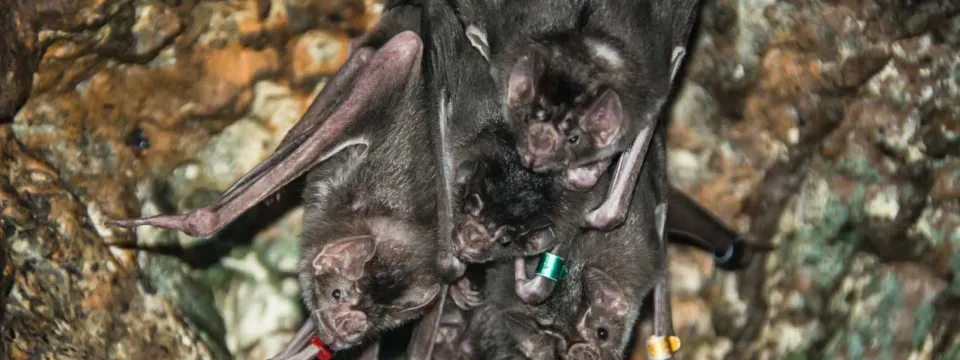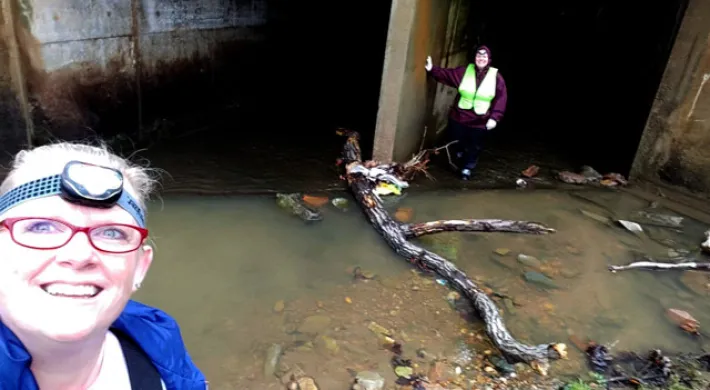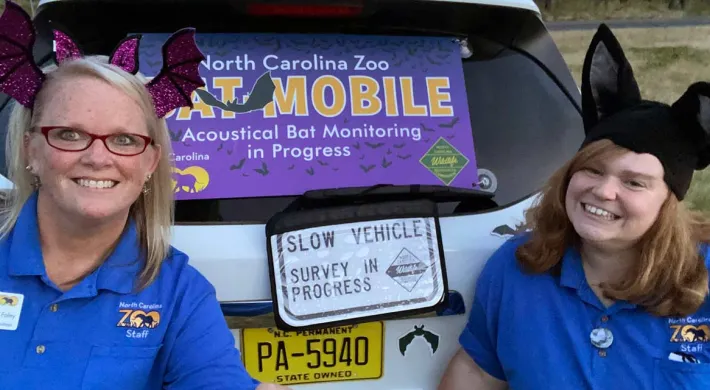Written by Leslie Wilhoit, School Programs Coordinator, North Carolina Zoo
Another year in the books for our participation in the acoustic bat monitoring project! There have been some staffing changes, so our very own Zoo EDventures host Steve joined me for the late-night route around the city of Rockingham, N.C.
The bats were quieter this year, making me look silly because I was bragging about how loud and numerous they were to Steve. Thankfully, we did hear plenty to make the night worthwhile. Now we wait for the analyzed data to come back from Dr. Han Li and the N.C. Wildlife Resources Commission. Though we may not have our specific data, Dr. Li met with us to discuss how he analyzes the data. The technology we use during the transect surveys captures sound continuously and automatically creates smaller clips when it hears bats.
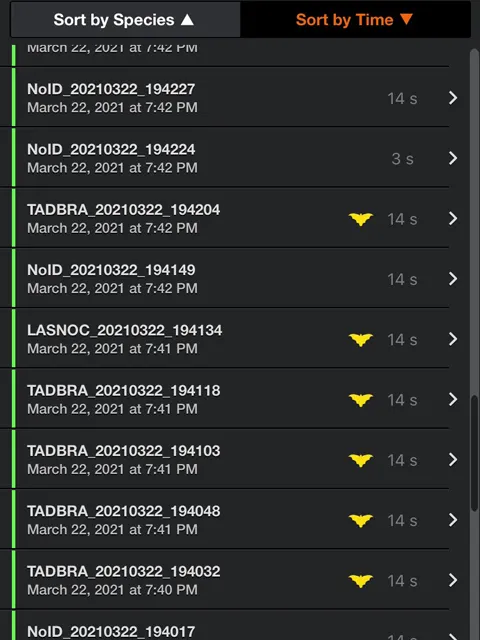
Screenshot of captured calls!
When Dr. Li analyzes the individual recordings, he’s not only making sure the initial ID is correct, but he can see if additional calls are showing up that were not identified by the application. For example, the picture below shows one brighter call and a smaller, darker call in between. The software identified the bright one but not the other, and, in this case, they are two separate species.
Armed with this extra information, he can get a more concise image of the amount and location of bat species throughout the survey. He then compares it year to year to see if there is a noticeable difference. Even though the acoustic bat monitoring project in North Carolina has been running the longest of any within the NABat program, Dr. Li thinks it will take a couple more years to get the amount of data needed to tell truly a difference.
From this initial research, the Conservation, Education, and Science section at the Zoo decided to purchase our own bat acoustic monitoring device. While it is typically used during educational programs, we also use it to understand better what bat species live here. One main area we have seen evidence of bats is near the Zoo's Watani Grasslands habitat. I worked with Nancy, the Zoo's Animal Management Supervisor of Elephants, to capture echolocation calls. The monitoring device found the presence of big brown and Mexican free-tailed bats living in the elephant barn.
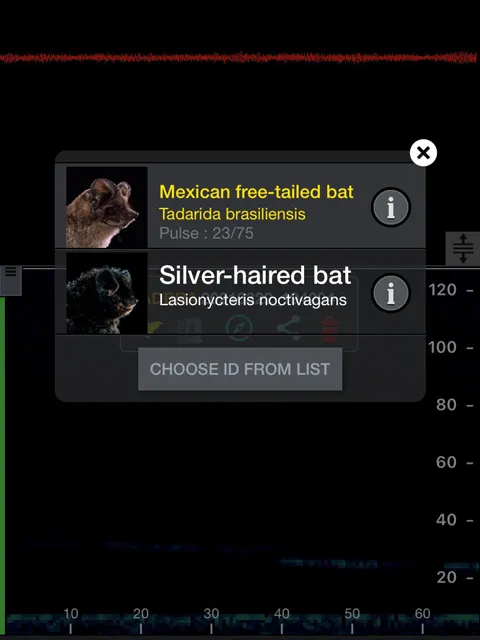
Evidence of MFTB
We sent the information to Dr. Li to verify what the device found. Next, I met with Melissa, Rocky Coast Keeper, and Betsy, Associate Curator of Regional Conservation, to learn more about identifying bat calls and ways we can provide roosting spaces for these species. We hope to eventually install “rocket boxes,” which are large, multi-tiered bat homes that hold one or multiple bat colonies. They are about four feet tall, two feet wide, and placed roughly 12 feet into the air. Bats are notoriously picky about where they choose to roost, and it can sometimes take years for a whole colony to move into a new area. The amount of direct sunlight, distance from trees, and proximity to bodies of water can all affect the chances of a successful bat home.
Learn more about creating a bat home near you and check out our Zoo EDventures "Searching for Bats" on the North Carolina Zoo’s Facebook to hear about even more ways you can help.
The North Carolina Zoo is home to a colony of vampire bats! You can see them in the nocturnal habitat in the Desert.

